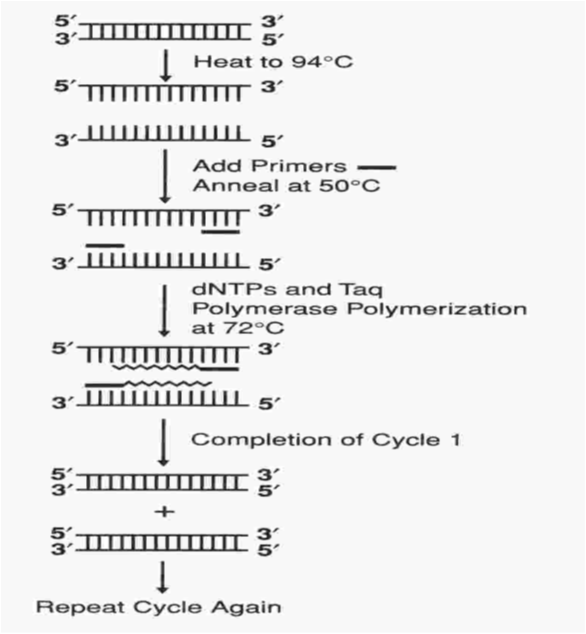Sunday, March 15, 2015
Recombinant DNA
Overview of rDNA









 Uses of PCR
Uses of PCR
Diagnosis of various diseases
Genetic fingerprinting
Paternity testing
To detect HIV in newborn whose mother are HIV +ve.
To detect the viral load.
1.Isolate DNA
2.Cut with restriction enzymes
3.Ligate into cloning vector
4.transform recombinant DNA molecule into host cell
5.each transformed cell will divide many, many times to form a colony of millions of cells, each of which carries the recombinant DNA molecule (DNA clone)

Cutting DNA
Restriction enzymes are the scissors of molecular genetics. Restriction enzymes (RE) are endonucleases that will recognize specific nucleotide sequences in the DNA and break the DNA chain at those points. A variety of RE have been isolated and are commercially available. Most cut at specific palindromic sites in
the DNA (sequence that is the same on both antiparallel DNA strands). These cuts can be a staggered which generate “sticky or overhanging ends” or a blunt which generate flush ends.

Joining DNA
Once you have isolated and cut the donor and vector DNAs, they must be joined together. The DNAs are mixed together in a tube. If both have been cut with the same RE, the ends will match up because they are sticky. DNA ligase is the glue of molecular genetics that holds the ends of the DNAs together. DNA ligase creates a phosophodiester bond between two DNA ends.

Amplifying the recombinant DNA
To recover large amounts of the recombinant DNA molecule, it must be amplified. This is accomplished by transforming the recombinant DNA into a bacterial host strain. (The cells are treated with CaCl2 ---> DNA is added ---> Cells are heat shocked at 42 C ---> DNA goes into cell by a somewhat unknown mechanism.)
Once in a cell, the recombinant DNA will be replicated. When the cell divides, the replicated recombinant molecules go to both daughter cells which themselves will divide later. Thus, the DNA is amplified.

Vectors
Requirements for a cloning vector
a) Should be capable of replicating in host cell
b) Should have convenient RE sites for inserting DNA of interest
c) Should be small and easy to isolate
TYPES:

Expression vectors
vectors that carry host signals that facilitate the transcription and translation of an inserted gene. They are very useful for expressing eukaryotic genes in bacteria.


Others: Cosmids
YAC (Yeast Artificial Chromosomes)
Retroviruses
Why is rDNA important?
Recombinant DNA has been gaining in importance over the last few years, and recombinant DNA will only become more important in the 21st century as genetic diseases become more prevelant and agricultural area is reduced. Below are some of the areas where Recombinant DNA will have an impact.
Better Crops (drought & heat resistance)
Recombinant Vaccines (ie. Hepatitis B)
Prevention and cure of sickle cell anemia
Prevention and cure of cystic fibrosis
Production of clotting factors
Production of insulin
Plants that produce their own insecticides
Germ line and somatic gene therapy
Genetic Testing
Blotting Techniques:
Gel electrophoresis – DNA fragments of different sizes can be separated by an
electrical field applied to a “gel”. The negatively charged DNA migrates away from the
negative electrode and to the positive electrode. The smaller the fragment the faster it
migrates.


POLYMERASE CHAIN REACTION
Short sequence of DNA can be amplified into millions fold within few hours.

Diagnosis of various diseases
Genetic fingerprinting
Paternity testing
To detect HIV in newborn whose mother are HIV +ve.
To detect the viral load.
Labels:
dna,
recombinant
Subscribe to:
Post Comments (Atom)


No comments:
Post a Comment